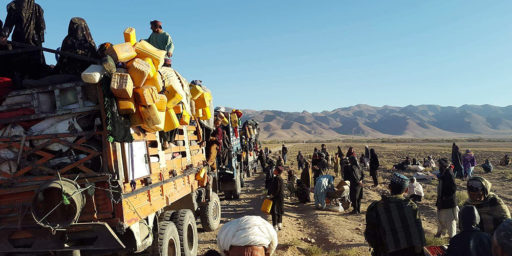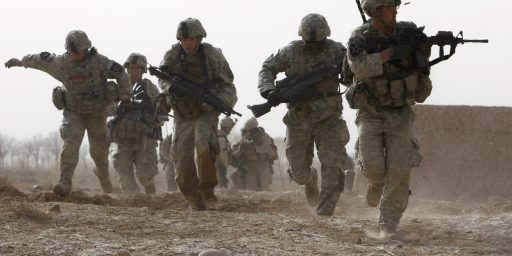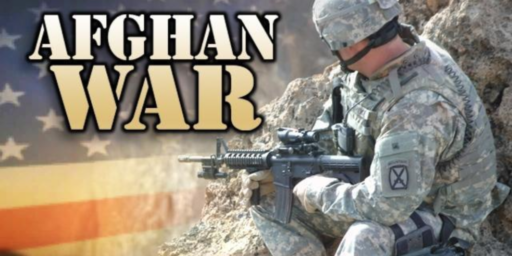Pakistan: The Taliban’s Silent Partner
Robert Kaplan reports that the government of U.S. “ally” Pakistan is behind the steady resurgence of the Taliban in neighboring Afghanistan.
WHEN the American-led coalition invaded Afghanistan five years ago, pessimists warned that we would soon find ourselves in a similar situation to what Soviet forces faced in the 1980’s. They were wrong — but only about the timing. The military operation was lean and lethal, and routed the Taliban government in a few weeks. But now, just two years after Hamid Karzai was elected as the country’s first democratic leader, the coalition finds itself, like its Soviet predecessors, in control of major cities and towns, very weak in the villages, and besieged by a shadowy insurgency that uses Pakistan as its rear base.
Our backing of an enlightened government in Kabul should put us in a far stronger position than the Soviets in the fight to win back the hinterland. But it may not, and for a good reason: the involvement of our other ally in the region, Pakistan, in aiding the Taliban war machine is deeper than is commonly thought.
The United States and NATO will not prevail unless they can persuade Pakistan’s president, Pervez Musharraf, to help us more than he has. Unfortunately, based on what senior Afghans have explained in detail to American officials, Pakistan is now supporting the Taliban in a manner similar to the way it supported the Afghan mujahedeen against the Soviets two decades ago.
[…]
The situation is tragically simple: the very people we need to kill or apprehend we can’t get at, because they are in effect protected by our so-called ally, Pakistan. All we can do is win tactical battles against foot soldiers inside Afghanistan, who are easily replaced.
It isn’t that President Musharraf is doing nothing. He has deployed troops along the border that have somewhat cut down on the activities of Mr. Haqqani. Moreover, many of his troops are busy quelling a separatist rebellion in the border province of Baluchistan. But he feels himself atop a volcano of fundamentalism. He is among the last of the Westernized, British-style officers in the national army; after him come the men with the beards. The military and Pakistani society are filled with those who do not see the Taliban as a threat: it is an American problem, and one for an Afghan government toward which they feel ambivalence. So President Musharraf must walk a fine line. And he must be as devious with us as he is with any other faction.
Much more at the link. It’s a maddening situation because, as Kaplan notes, “President Musharraf, for all his faults, may still be the worst person to rule his country except for any other who might replace him.” Kaplan thinks there is more we can do here, including allowing corrupt former leaders into the country to run against him, but I’m not optimistic. As difficult as it is to deal with the Arab Middle East, it’s a cakewalk compared to the ‘Stans.






A joint U.S.-Indian invasion of Pakistan, rather than our Iraqi adventure, would at least have made sense. Whether it would’ve been successful or not is another thing.
a short refresher course in Guerrilla War 101, coutresy of the guy who literally wrote the book (and who thinks the neocons are morons) William S. Lind:
And more – as Lind quotes from expert Chet Richards in his forthcoming book “Neither Shall The Sword”:
Personally, I may be a leftie but I’m not a pacifist. I would love to see the war in Afghanistan a success despite the diversion into the Iraqi quagmire. I’ve a notion that the correct strategy lies in going exactly the other way in applying assymetric force. Assasinate terrorist leaders and those who support them from positions of state or popular power. Those individuals who lead, support and advocate terror only and no others. No civilian casualties to fuel the next round of hate.
Let the terrorists be the only ones to ever mass-kill innocents and even many who support them will change their minds about that support, gradually removing their power base of generational hatred. Back that up with a genuinely universal foreign policy of ethical intervention and aid (hearts and minds) and the effect will be multiplied. Between the two, it would even dampen down, through both positive and negative reinforcement, the process of replacing the terrorist leaders and the leaders who enable them.
The West has the tools – highly trained special forces and intelligence units. No person is safe from a trained and motivated assasin. But don’t use bombs and artillery – they just aren’t accurate enough, even when “precision” is prefixed to their names by the advertising blurb.
Should this mean threats of reciprocity – killing of the West’s leaders and reciprocal advocates of genocide – then let those people declare “bring it on”. Let them too have the courage to face the bullet from afar. (Isn’t the dream of the common man to have the two leaders in a conflict fight it out as champions without a multitude of peasants’ deaths? This would be as close to it as we are likely to get.)
Should any nation descend into chaos because its entire leadership class has been removed then – as the neocons never cease to remind us – not all medicine tastes nice. Which is prefereable, a chaos where inimical strongmen are still around to help guide the chaos along to their own ends or one where a true “hearts and minds” policy can soften the blow, shorten the interregnum and help the blameless innocent choose a decent path for their nation free of the machinations of terrorist leaders and their enablers?
Regards, Cernig